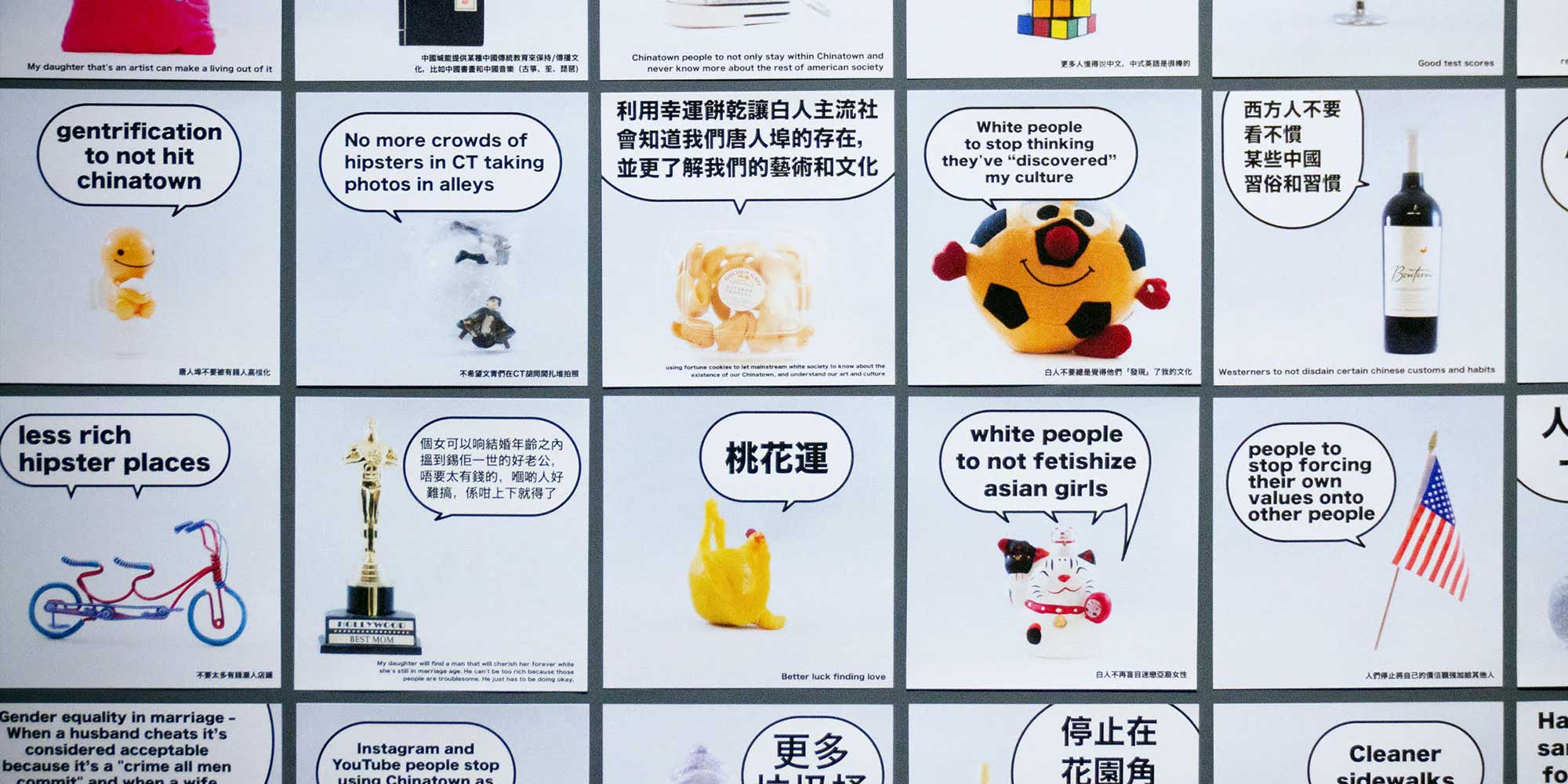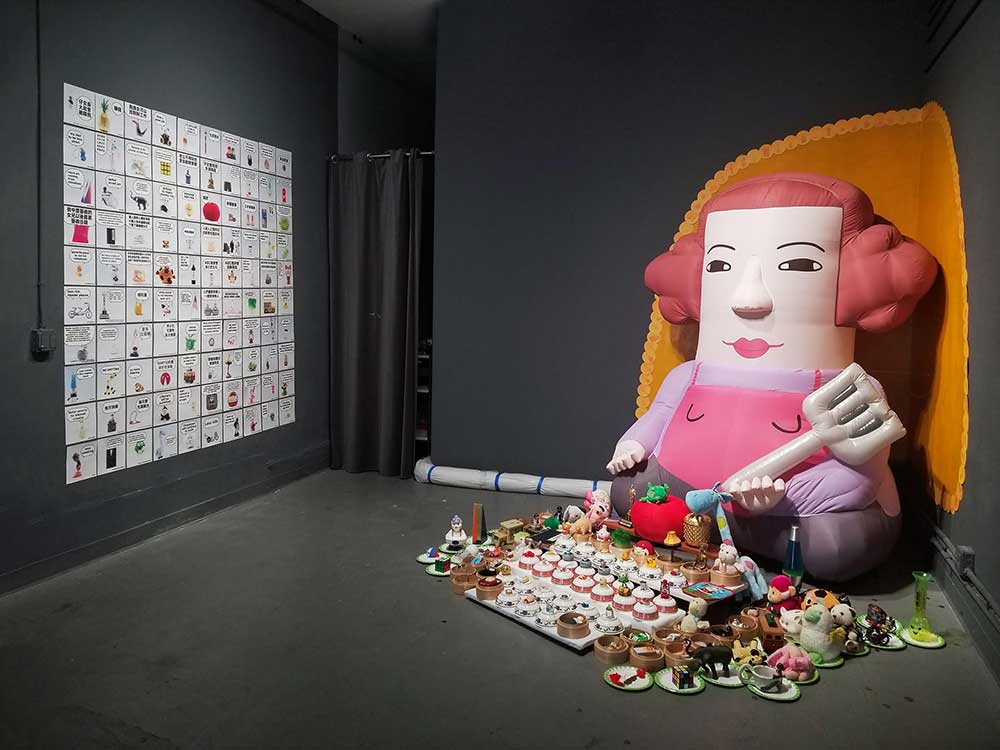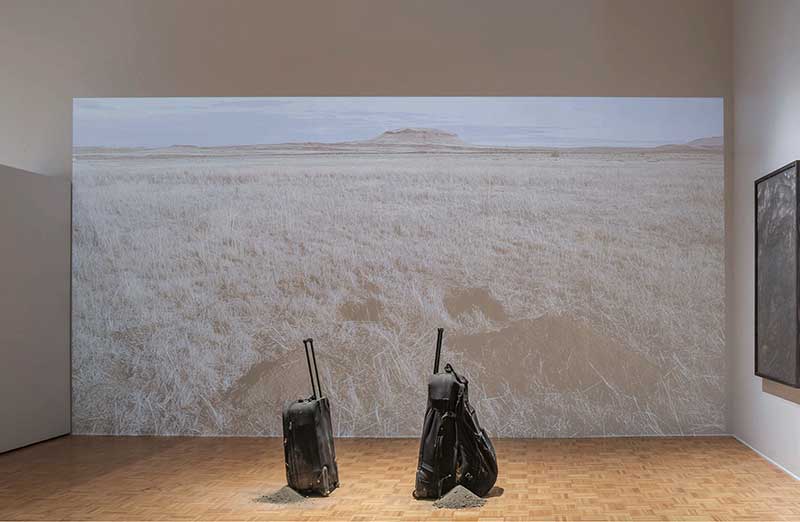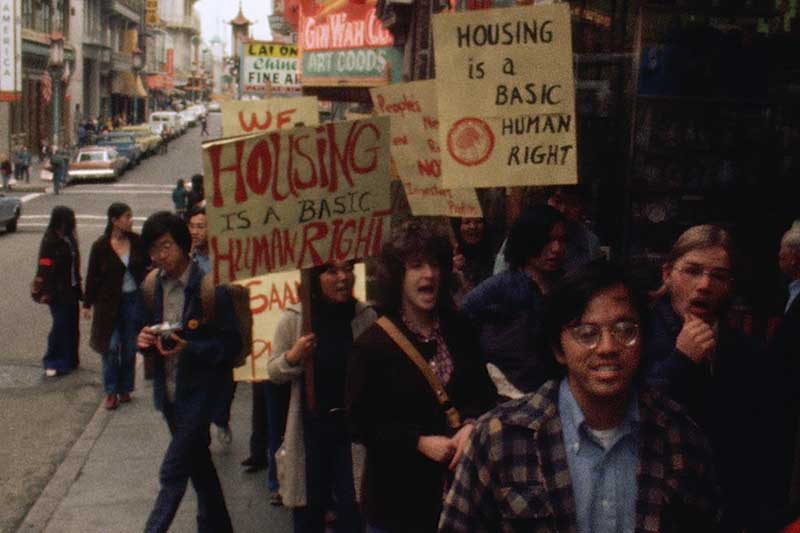Thu July 3rd Open 11 AM–5 PM
Resilience, Power and Playfulness: The Women of Chinatown San Francisco

This article is part of the ongoing Come to Your Census: Who Counts in America? experience. This collaboration with Art+Action is part of their COME TO YOUR CENSUS campaign—powered by San Francisco’s Office of Civic Engagement and Immigrant Affairs (OCEIA)—which hopes to mobilize the public to take the 2020 U.S. Census. We want everyone to be counted and receive their fair share of funding and political representation for their community.
If you have not already done so, we highly encourage you to take the 2020 U.S. Census.
Bijun Liang is an interactive media and installation artist from Chinatown San Francisco. Through humor, crowdsourcing, and virtual simulations, Bijun retells the everyday to showcase voices of those often forgotten. For Come to Your Census: Who Counts in America? YBCA and Art + Action invited Liang to reimagine her work Chinatown Omens, a participatory wishing shrine that combines Chinese superstition, coin-throwing, and carnival games to explore the strength of women in San Francisco’s Chinatown.
Liang sat down with founder of re.riddle and member of the Come to Your Census curatorial committee Candace Huey on May 12, 2020 to discuss the resilience of women in Chinatown and the power of playfulness.
Candace Huey: Bijun Liang is an artist and product and visual designer in San Francisco, who is passionate about emerging technologies, social good, and bridging diverse communities. Thank you so much Bijun, for sharing about your project for YBCA and Art+Action’s art and civic experience, Come to Your Census: Who Counts in America?
Bijun Liang: Hi, Candace. Very happy to be here.
CH: Please describe your experience of being a Chinese-American raised in Chinatown SF and what does this mean to you.
BL: Sure thing. I’d say that I have a pretty classic story of being a first generation kid. My family immigrated and landed in Chinatown, San Francisco in the early 2000s. We have a couple relatives that came here in the ’90s as well, and to be able to arrive in a new country and find people that share the same language was very important in helping my entire family get settled in the United States. I’d say Chinatown in San Francisco has historically been a very important transitional space for a lot of families like mine. This place really embodies the values of the people that live in it. Having grown up here for the past 20 some odd years, I can say it is a very lively, community-driven place, filled with very resourceful and self-sufficient people.
I’d say people are not afraid to be very proud of their own culture, but also very critical of that culture at the same time.
CH: I definitely see the duality you describe. Your installation for the Come to Your Censusart and civic experience is an engaging, interactive installation titled Omens, which originated from a significant project with the Chinese Culture Center of San Francisco—Women in Chinatown: Reimagining Symbols of Power and Access, with artists Laura Boles Faw, Vida Kuang, and Shisi Huang. Can you tell us a little bit more about the original work you created?

BL: Yes. So this project was started by the Chinese Culture Center in collaboration with the lead artist, Laura Bowes Faw. The Center wanted to find artists to develop work that explored issues around gender and equity in the neighborhood. They were essentially looking to build connections among the Chinatown community members. So all three of us artists that contributed to this exhibition were very focused around creating interactive pieces of work that can really bring members of the community or people visiting the community together.
My project Omens in Chinatown, as it was named originally, was my interpretation of this initiative. It was rooted in my own experiences, having grown up as a woman in Chinatown myself, and also from different people that I interviewed and surveyed for the purpose of the exhibition. The project itself is a crowdsourced wishing well that combines traditional Chinese superstition coin-throwing and fun carnival games to address and empower the mental fortitude of the women living here.
I interviewed and collected a hundred objects from different women that either live or work in Chinatown. They each answered the question “What wish do you have for yourself or for the community?” and then this wish or concern that they had, was bestowed onto the object that they gave me, becoming an omen. And the collection of all of these objects became a miniature wishing shrine focused around our current day concerns, collected from these object’s owners themselves.
CH: Could you give us an example of one of omens or wishes that were bestowed upon an object?
BL: Yes. I can talk about the one that I gave.
One of the things that I’m personally really afraid of is those internet curses, where you’re scrolling through social media or those email chains that you got a few years back and it says something like, “If you don’t send or share this to 10 different people, your mom’s going to die.” So I had a little ghost figurine that I gave an omen saying, “Anyone that throws a coin and hits this object, you’ll forever be spared from those internet curses,” essentially. Some women wished for small things like, “I just want hot water at my workplace,” but sometimes the mens’ would get a little more serious with wishes like “I hope my sister can recover from her illness,” or “I wish other cultures would stop stereotyping us,” or I think some of the younger women would even say, “Yellow fever needs to stop,” or “Stop fetishizing Asian women.” So the piece holds a huge spectrum of people’s concerns.
CH: How might the interaction between the installation, objects, and viewer lend itself to a moment of transformation and empowerment for the women in the community? For the marginalized and most vulnerable populations?
BL: How the installation works is that anytime a visitor throws a coin, whether they are from Chinatown or not, they are automatically contributing to the wishes of the women in the community. If the coin hits the object, the person that threw it gets some immediate gratification, so that’s just the fun part of it. But the participant also perhaps gains some emotional support through a personal belief in having just retrieved good luck. The objects and the coins that are thrown become symbols of collective hope and prayer, and because all these wishes are written and translated in English, Mandarin, and Cantonese, it also showcases the voices from the different women in the Chinatown community who may have otherwise been unheard of for various reasons like language barriers.
CH: What do symbols of power mean for Women in Chinatown and how did that translate in your work?
BL: When I first started this project, I actually went around talking to women in Chinatown to ask them, what do symbols of power mean? And interestingly, I found out about a couple things. In quite the Chinese spirit, they didn’t find empowerment from our government. They didn’t feel like they had to be given anything. They were very proud of their ability to be resourceful and make the best of every situation, no matter what it is. They actually cared very little about the art and visual representation that’s already in the neighborhood. One of the quotes was basically, “I’m just too busy being self-sufficient and doing my own thing, and I can survive just well on my own.”

But what I did find out is that even though they didn’t focus on having the aid of this external force, they really cared about their own determination and resilience, and consistently, all of them believed in things like good luck and auspicious omens. That’s why you see a lot of these money trees or beckoning cats in stores. So by having the wishing shrine, I was personally thinking it could become a type of self-fulfilling prophecy at play for anyone that interacts with the installation piece.
CH: How was Omens reinterpreted and elaborated for the Art+Action and YBCA art and civic experience?
BL: Because the original piece was very focused around Chinatown, particularly women in Chinatown, for the YBCA exhibition, because it’s focused around Census 2020, I wanted to be able to showcase many other types of voices in our community, regardless of the original scope that it had.
For this presentation, I am going to be bringing the original hundred objects that I have, but I’m hoping that it grows, where anyone that comes by or even finds out about it online, can submit their own wishes and objects, so that this wishing shrine will just continue to grow larger and larger, and individual voices can be heard for anyone to see.
CH: What do you think is the significance of Omens for this period of uncertainty?
BL: I believe that when someone is able to get a good omen, it somehow provides a little bit of internal certainty and stability. You can go around saying, “Hey, 2020 is weird. No one knows what’s going on, but at least this random plastic toy in an exhibition told me I’m going to be super lucky this year.”
And even though it’s entirely irrational and pretty much pure imagination, it gives the person an opportunity to find a way to kind of assert themselves, they can believe that good things are going to happen. You’re pretty much in control when it comes to acting in ways that you personally believe are good, that will result in good omens versus bad ones. In a period of uncertainty, that type of certainty in your own control is pretty important. The original idea around Omens was to essentially use superstition or personal belief as an agent for empowerment, and I think it translates quite well for this odd time right now.
CH: The work also offers some levity in these disquieting times. There is a “playful” aspect to Omens via the familiar children’s toys and games, which prompt interactive engagement with the audience. What were your thoughts around play for this artwork?
BL: To answer that, I have to mention, this project was inspired by my childhood memories of going to Buddhist shrines. As a kid, I actually found it really boring and tedious. You had to go twice a month, you’re just standing there waiting for your parents to light incense, and you’re also standing around in a temple full of smoke. You don’t really know what’s going on, and you don’t really see the full significance of belief. But for me, there was a saving grace. There were these statues around the shrine, like stone turtles, perhaps, and it was always a really fun activity for both parents and kids that went to the temple, to throw coins at them, because if the coin actually hit the statue, say, the turtle, that represented that you will live for a very long time. And if you hit some other statues within the temple, then they can bring in good omens for different reasons. So each object represented something else.
So because a large portion of the Chinatown community believes in Buddhism, its practices are a pretty ingrained part of Chinese culture. I wanted to bring in this kind of familiar aspect to the piece. The work is also similar to the types of play you see at carnival games that are quite fun for the entire family. For me, this is actually one of my favorite parts of the project, because you have a lot of fun learning about all the wishes and concerns from the community, but you’re also having fun playing a game on your own.
CH: Just for fun, do you have an omen for the near future?
BL: I’ll wish for a pretty relevant one right now, which is the freedom to go outside whenever I want to. I’m going to have to decide on an object later, but that is something that I would personally wish to never have to worry about again.
CH: Thank you Bijun for sharing your insights into your work and process.
BL: Thank you so much, it’s been a pleasure.
CANDACE HUEY
re.riddle’s founder and principal, Candace Huey, brings her extensive knowledge of and experience in the art world to her projects. Huey has worked for the Fine Arts Museums of San Francisco, Bonham’s auction house, Alameda County Arts Commission and various galleries in the Bay Area where she curated exhibitions showcasing the work of 20th century masters and contemporary artists. As an independent curator, she conceptualized and produced exhibitions for cultural institutions such as Chinese Culture Center of San Francisco, Consulado General de México, Consulado General de España, and Consulat Général de France, San Francisco. She consults on collection portfolio and development for private clients in San Francisco, Hong Kong, Chicago, London and Paris.
Huey holds degrees from The Courtauld in London and U.C. Berkeley, and has presented her academic research on 17th century Dutch Art at renowned conferences in the United States and the Netherlands. She currently teaches art history at a private university, sits on the executive council for SECA SFMoMA, de Young Museum College Programs Advisory, ArtTable and is an active member of Artadia San Francisco Council and Headlands Center for the Arts.
Lead image: Detail of omens with their corresponding objects provided by women working and living in Chinatown SF. Courtesy the artist.



